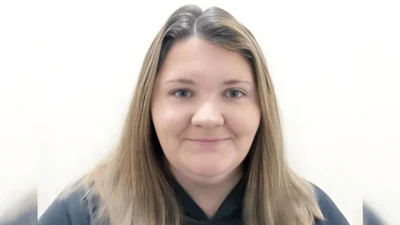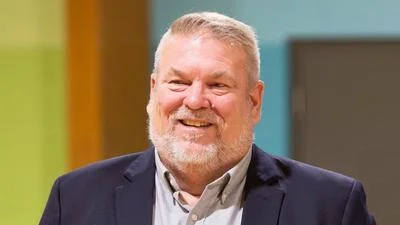The Illinois Department of Natural Resources Advisory Board met Feb. 8 to discuss migratory birds.
Here are the meeting's minutes, as provided by the board:
Illinois Department of Natural Resources manages, conserves, preserves and protects Illinois’ natural, recreational and cultural resources. Promotes the education, science and public safety of Illinois’ natural resources for present and future generations.
Natural Resources Advisory Board February 8th, 2016 Meeting Minutes
NRAB Members:
Jerry Hiller Scott Bryant Marshall Douglas Matt Langendorf Robert Wilson John Fleischli Darel Martin Aaron Kuehl Joseph Mark Naomi Davis
IDNR Staff:
Director Rosenthal Brent Krebs Jim Herkert Mark Alessi Todd Rettig Tim Schweizer Tami Evans
Guests:
Karri Alms Michael Rasmussen
Chairman Fleischli opened the meeting at 4:00 p.m.; roll call was given.
Matt Langendorf provided a motion to adopt the February 8th, 2016 agenda; Jerry Hiller provided the second.
Scott Bryant motioned to accept the October 26, 2015 meeting minutes; Matt Langendorf provided the second.
NRAB Duties - Brent Krebs, IDNR Chief Legal Counsel – Director Rosenthal asked Brent to attend the board meeting and provide the board with an outline of their duties and responsibilities as members of the Natural Resources Advisory Board. The Natural Resources Advisory Board was created by statute and plays a significant role operating in an advisory role, and as a recommendation body for the executive office, (Director Rosenthal). The director has the duty/responsibility to take the board’s recommendations under advisory, but does not necessarily have a duty to adopt recommendations. Most state agencies that have boards and commissions are advisory.
All Natural Resources Advisory Board members were provided with an updated board packet that included the Natural Resources Advisory Board statute in June 2015. If you have any questions relative to your role as a board member, or have anything that you need addressed from IDNR staff, please e-mail Tami.
2016-2017 – Waterfowl Season Bag Limits – Mark Alessi – Mark provided the board a paper copy of a power point presentation on the 2016 Waterfowl Bag Limits. The October 2015 meeting was the review of the proposal for the waterfowl season dates and zone lines for the next 5 years.
Migratory Birds are protected by the Migratory Bird Act, along with specific state protection. The USF&W Service have regulatory folks and analysts that look at how many species have been harvested in each state. If birds can be harvested, and increase or remain stable, the North American Model of Conservation and wildlife management suggests that we should be able to manage harvest. Waterfowl and other migratory birds are regulated by the federal government. The Feds roll out framework for waterfowl hunting and states makes recommendations as long as the resource is available.
A lot of changes have occurred at the federal level relative to bag limits which allows the Department to review waterfowl season bag limits on an annual basis.
The regulation process within the federal framework has also changed. In the past, there were two different season selections that occurred, one being early season selections, early goose/teal followed by the late season selections, the regular goose season. Now, states within their flyaway and within the federal framework submit their proposals. In April the department will receive that criteria and submit what its recommendations for bag limits and season dates are.
The feds are liberalizing the Canada goose regulations for the entire flyaway; Illinois is in the Mississippi Flyaway. They are simplifying regulations to give states the ability to manage the resource, as long as there is not a detriment to the national flyaway population.
The federal framework offers 3 geese a day for 107 days throughout the regular goose season. 50% of Illinois’ harvest is attributed to the MVP population of Canada geese; MVP population is in the Hudson Bay area. Illinois is very unique in that a significant portion of goose harvest is attributed to a declining population of Canada geese. Illinois has a disproportional affect from any sort of a decline in due to the MVP flock in the Hudson Bay.
The department uses the adaptive management approach just like we do most of our wildlife management issues.
Scott Bryant suggested that the department ensure that the public understand the depth of our decisions on waterfowl season limits.
Staff recommendation is to replicate the 2016 regular waterfowl bag limits for early teal (follow Federal framework: 6 teal per day, early goose (follow Federal framework for north and central zones: 5 geese per day; conservative approach in south-central and south zone: 2 geese per day) ducks (follow Federal framework; 6 ducks per day), white fronted geese (follow Federal framework: 2 white-fronts per day), snows (follow Federal framework: 20 snow geese per day. The goal is to maximize hunting opportunity and to maximize harvest.
Scott Bryant motioned to accept staff recommendations, keeping the waterfowl season bag limits the same as they have been in the past. Matt Langendorf provided the second. No opposition was heard.
Compound Bow – Mark Alessi – Mark was asked to provide the board with information regarding compound bow usage, specifically why the department currently has a 40 pound draw weight requirement. Most states have a poundage requirement for compound bows essentially due to the amount of energy forced from the bow into the arrow and then into the harvest.
Discussion ensued on fair chase of animals, old bows versus newer technology, pros & con’s, youth issues, kinetic energy, etc. Mark agreed to look into the issue further, collect data from the industry, and take the issue to the committee for formal review.
The Department has created a Hunting Equipment Advisory Committee made up of Law Enforcement, Hunter Safety, Wildlife, Legislation, and Legal Counsel for these types of questions, requests or new ideas. The compound bow issue could be brought to this committee for formal review on whether it should be reduced or not. This committee will have a set of goals and will be able to look into and address such issues that one person can’t address individually. Once the committee has a request, it will identify whether the department already has the authority to implement within its administrative rule process. If statutory authority is requested, the department will send a formal letter back to the applicant indicating where in the statute it’s prohibited.
State Park Status – Todd Rettig – Todd is the Director of the Office of Land Management. Land Management oversees all of the state park and recreational areas; approximately 480,000 acres of land and water and around 320 state sites. In 2015 it was estimated that there were 38.1 million visitors to the department’s state park and recreational areas. State park facilities offer a variety of activities ranging from geocaching, fishing, boating, hunting, stargazing, horseback riding, snowmobiling, camping, etc. There are over 1300 miles of hiking trails, 525 picnic shelters and approximately 17, 431 picnic tables throughout the state.
Scientific research tells us that there are two main issues that the public expect. Having helpful and informative staff and keeping sites mowed and free of litter. The department mows about 17,000 football fields of grass during the summer season.
Maintaining these sites can be challenging. In 2004, lands had 517 employees, today we have 375. Other than a site superintendent, some sites have only 1 full time employee. On average, Illinois has one employee for every 1128 acres. Indiana has one person per 484 acres.
The budget impasse has provided an even bigger challenge with utilities, water, fuel needs and garbage pickup. Most vendors have helped the department through these challenging times.. The biggest long term challenge is keeping our facilities open and ensuring knowledgeable staff is in place.
NRAB Dates – Director Rosenthal – Dates for the 2016 Natural Resources Advisory Board are: May 23, July 18 and October 24.
Board Comments:
Director Rosenthal stated that the Museum opening is making progress.
The department has entered into a Memorandum of Understanding with the ATA on keeping the World Shooting Complex running if the department can’t open by April.
Information on fracking permits are picking up.
Hope to have additional deer data at the next meeting.
Grants are still suspended; proposed budget for 2017 looks to be ok. CPO’s are the number one priority.
Planning a Director’s Hunt at Rend Lake in November; monies raised will go toward veterans.
If you have anything you need, please let Tami know.
Scott Bryant thanked the Director and staff for the open door policy afforded to the department’s constituents.
Public Comments:
Karrie Alms addressed the board again regarding the City of Peoria’s Riverfront land conversion request.
Information that she provided during the meeting can be found at these links:
https://dnr.portal.illinois.gov/teams/directors/Communications/City%20of%20Peoria%20Land% 20Conversion%201%20NRAB%202016.pdf
https://dnr.portal.illinois.gov/teams/directors/Communications/City%20of%20Peoria%20Land% 20Conversion%202%20NRAB%202016.pdf
https://dnr.portal.illinois.gov/teams/directors/Communications/City%20of%20Peoria%20Land% 20Conversion%203%20NRAB%202016.pdf






 Alerts Sign-up
Alerts Sign-up